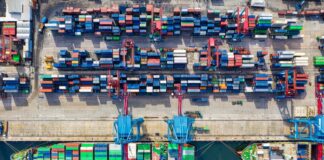Reporting on transport energy consumption – what are the first steps?
Telling new data from the Europe Environment Agency (EEA) shows that transport consumption is rising – and this is having a massive impact on energy targets.
Rising emissions are a big no no from the perspective of sustainable business costs. Evidently then, it’s appropriate that ESOS and the new SECR carbon reporting scheme include transportation in their requirements; after all this will help business bottom lines.
However for some the game is new; many businesses will be measuring their transport emissions for the first time through SECR. So how can UK PLC prepare?
First steps to reporting on transport emissions
There are a few ways you can start to gather transport consumption data. Ideally, you’d use actual fuel consumption, calculated in litres of diesel, petrol LPG, and so on as activity data.
From this it should then be quite straightforward to calculate energy and emissions. For companies that use fuel cards, or who refuel in house, you may have most or all of your transport data already.
Where this data isn’t available, some judicious estimation is called for. This might come either from mileage, or fuel spend.
Neither are perfect, but they’re both a lot better than nothing. Mileage can be used in conjunction with engine size to estimate fuel use, while spend can be multiplied by average fuel costs to arrive at an approximate fuel consumption value.
Going beyond requirements
Both SECR and ESOS require companies to report on fuel used in company vehicles. But SECR encourages firms to go further – by voluntarily reporting on scope 3 transport emissions too. That is to say, fuel from vehicles that are not operated by the company – including train, air and taxi journeys.
Evidently, the data gathering exercise for this will be more challenging. But companies that are well established in transport reporting may wish to go this extra step to demonstrate transparency and commitment to reduction.
The final word on transport
EEA’s analysis provides a useful footnote to this discussion, saying that new legislation in the areas of heavy duty vehicle emissions and real driving emissions are expected to help reverse the current upwards trend in transport emissions.
This is exactly what ESOS and SECR are about. For firms concerned about extra reporting burdens, the key is to understand that by driving down fleet emissions, you are driving down spend.
And, many alternatives to emissions-heavy fuel exist. “This is an exciting time for renewable transport,” Nina Skorupska, chief executive of the REA, told Biomass Magazine.
“New regulations will fire the starting gun on UK development of novel fuels for aviation and other forms of transport which are hard to decarbonise, and build on our leadership position in the production of renewable fuels for road transport.”
The journal writes that fleet operators such as Waitrose and Asda are already converting to renewable gas, their drivers love the new vehicles, and these regulations will encourage more fleets to do so in the future.
It’s clear that low carbon technology and regulation are set to revolutionise business transport. Forward thinking businesses will be keeping an eye on the latest developments.
The Energy Advice Hub is powered by BiU, the UK’s leading energy and utility consultancy. If you’d like advice on energy consumption, give us a call on 01253 785409 or email energy-hub@biu.com.













